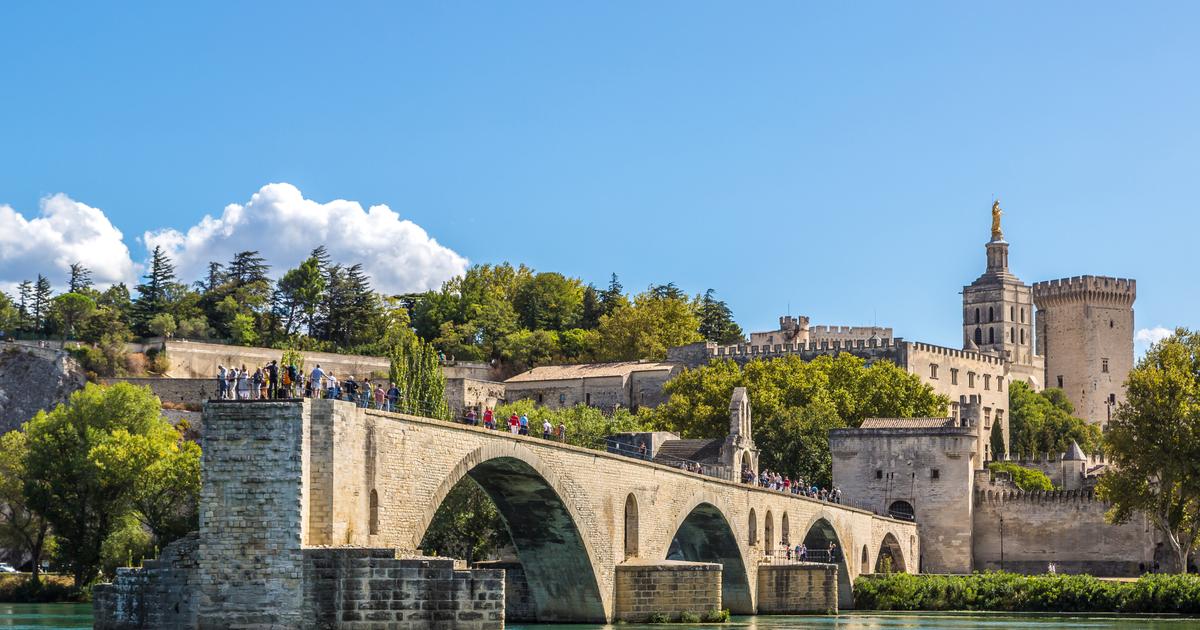Le Figaro Lyon
To discover
Follow all the news of the city of Lyon
Melting glaciers, rising temperatures, extreme droughts… How will the flow of the Rhône change between now and 2055?
The water agency has just revealed the results of a study launched two years ago on the most powerful river in France with a total flow of 55 billion m3 per year.
Conclusions which already show a drop of 7% in the flow of the river at the level of Lake Geneva and of 13% at the level of the estuary in the Camargue between 1960 and 2020. According to projections, the drop in 30 years from now will be around 20% more.
"
The effects of climate change are already being felt.
It is warmer and drier than in the 1960s. The average air temperature has increased by 1.8°C since that date.
The water in the river has also warmed up.
Since 1970, its average temperature has increased by 2.2°C in the north and 4.5°C in the south
”, indicates the water agency.
Regarding snow, the falls should drop by 20 to 40% depending on the area by 2055. A worrying figure since 60% of the waters of the Rhône come from the Alps.
“The exceptional” will become “banal”
So many more and more extreme conditions which require monitoring of this water resource which can no longer today "
be considered inexhaustible
", writes the water agency.
Until now, the volumes of water withdrawn from the river in the summer represented 15% of the flow volume.
A figure that could rise to 30% in exceptional years.
"
What we fear is that the exceptional in comparison to yesterday, will no longer be so in the future, or even become banal
with samples over 40%
", deplores Laurent Roy, director general of the Rhône-Mediterranean water agency.
In its report, the water agency also analyzes the consequences of this drop in flow.
For nuclear power first, which uses the river to cool its reactors (14 are installed along the Rhône).
“
This could lead to a 10% reduction in the production of power stations in the summer
,” explains Martial Saddier, president of the lower Rhône-Mediterranean committee.
Electricity still, the summer production of hydroelectric installations should also drop.
Finally, the rise in sea level combined with the drop in flow could lead to a rise in salt water in the river causing problems of access to drinking water and irrigation of the territories close to the delta of the Rhone.
“Red alert” on the summer of 2023
This bleak plan is now leading water stakeholders to take measures to better manage the management of the Rhône and its tributaries.
Since 2012, the reduction in withdrawals has already saved 340 million m3 of water, two-thirds of which have been produced by agriculture.
Public and industrial actors and all stakeholders are also working to better manage groundwater.
“
We will have to know how to store, substitute or recharge;
if we want to avoid a water war and have an intelligent sharing of resources
”, continues Martial Saddier.
To read alsoSalmons, eels and crayfish in peril of death in the rivers of Auvergne-Rhône-Alpes
In 2055, the melting of the glaciers and the rarer presence of snow should reduce the flow of the river by up to -21% in August, but cause higher floods in winter, going up to +30%.
“
In the future, the years will be more and more contrasted.
In the plus and in the minus.
In a century the flow will have dropped by a third.
But in our misfortune, in winter it will have increased by 30%.
We will therefore have to succeed in managing this winter surplus for periods when there is less water
, ”explains the president of the lower Rhône-Mediterranean committee.
This management could go through the recharge of the water tables by letting the river extend in its bed during the floods, but also by the creation of water reservoirs, today disputed.
There must still be vintages in winter, the summer drought of 2022 having been followed in 2023 by a major winter drought, already auguring a summer under tension.
“
The signals are red and even in the event of heavy rains in the months to come, these will avoid the worst, but will not bring us back to a normal situation
”, concludes Marie-Hélène Gravier, of the DREAL.

